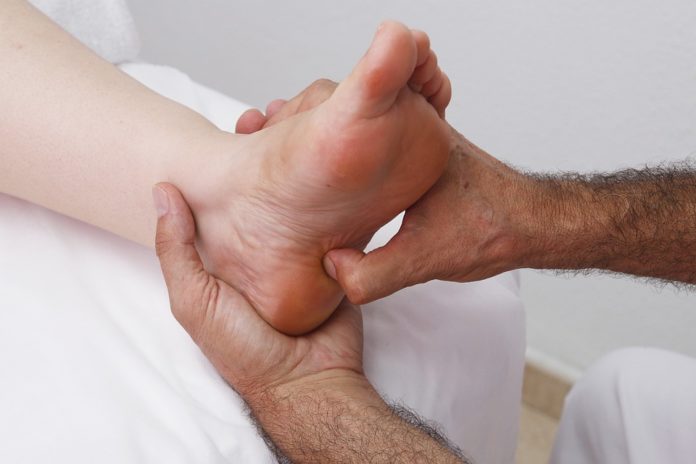By Jennifer M. Levi, DPM
If you have bunions, just putting on a pair of sneakers can be painful.
Yet many people endure the pain, fearing that surgical treatment will keep them off their feet for too long.
However, minimally invasive surgical techniques to correct bunions not only can relieve pain but can also enable patients to recover faster.
Orthopaedic specialists at Penn Medicine Princeton Health offer a variety of treatments for bunions and other foot conditions, from conservative therapies to advanced, minimally invasive surgery.
A Common Condition
A bunion is a structural deformity characterized by a bony bump on the inside edge of the foot at the big toe joint.
Bunions typically develop due to prolonged pressure on the big toe joint that causes the big toe to shift outward toward the second toe.
A common condition, bunions affect an estimated one third of adults in the United States, according to the National Institutes of Health, and are more prevalent in women than men.
While people of all ages can develop bunions, the risk increases as you grow older.
Moreover, you have a greater chance of developing bunions if you:
- Have a family history of bunions.
- Were born with abnormal alignment of the bones in your feet.
- Have flat feet or low arches.
- Wear high-heeled shoes, shoes that are toe tight or shoes with a narrow toe box.
Various Complications
Though bunions may often start out as a cosmetic concern, they can lead to various complications if left untreated, including:
- Pain and discomfort. Bunions can cause persistent pain, especially during activities like walking or standing.
- Bursitis, which occurs when the bursa, the fluid filled sac that cushions the bone near the joint becomes inflamed and causes pain.
- Decreased movement in the big toe.
- Corns and callouses where the big toe and second toe overlap.
- Hammertoe. Pressure from the big toe can cause the second toe to curl or bend in the shape of a hammer, leading to pain and other issues.
- Difficulty wearing regular shoes.
Bunions typically get worse over time and do not go away on their own. If bunions are impacting your quality of life, talk with your doctor about treatment.
Diagnosing and Treating
Bunions can normally be diagnosed with a clinical exam by your health care provider. Often, an X-ray will be recommended to check the alignment of your toes, identify any arthritis and determine the severity of the bunion.
Treatment for bunions typically depends on how severe they are. For early-stage bunions, treatment measures may include:
- Wearing wide-toed shoes. Modifying your footwear can often alleviate pressure on your toes and bunions.
- Using orthotic devices. Custom shoe inserts and toe spacers can help take pressure of the bunion and relieve pain.
- Medications. Nonsteroidal anti-inflammatory drugs can help reduce inflammation and relieve pain.
If bunions are severe or if conservative measures fail to bring relief, surgery may be recommended.
Minimally Invasive Surgery
In general, surgery to correct bunions involves cutting and realigning the bone in the big toe. The toe may then be held in place by pins, screws or plates.
There are a variety of different types of surgical procedures depending on the severity of the bunion and whether ligaments and tendons also must be repaired.
Traditional bunion surgery typically requires a four-to-six-centimeter incision to allow surgeons to access the joint and fix the bone. The procedure is performed under anesthesia. Recovery usually takes at least three months and requires patients to stay off their foot as much as possible.
However, many patients may be candidates for minimally invasive bunion surgery, which is performed with specialized instruments through smaller incisions (three to five millimeters) resulting in less pain, less scarring and a quicker recovery time.
In fact, most patients are able to bear weight on their foot while wearing a boot immediately after surgery and are back into sneakers five weeks later.
It’s important to note that as with any medical condition each case is unique, and the decision to undergo minimally invasive bunion surgery is an individual one.
A comprehensive evaluation by an orthopaedic surgeon, including a review of medical history and diagnostic imaging, will help determine the treatment approach that is right for you.
If you are considering bunion surgery, consult with a qualified orthopaedic surgeon to discuss your specific condition and available treatment options.
To find an orthopaedic surgeon affiliated with Penn Medicine Princeton Health, visit www.princetonhcs.org or call 1 (888) 742.7496.
Jennifer M. Levi, DPM, specializes in foot and ankle surgery. She is a member of the medical staff at Penn Medicine Princeton Health.


